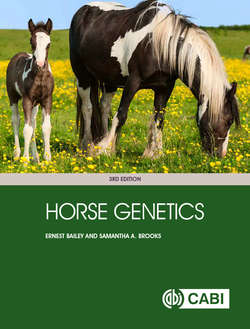Читать книгу Horse Genetics - Ernest Bailey - Страница 19
На сайте Литреса книга снята с продажи.
Archeological evidence for domestication of horses
ОглавлениеDomestication of the horse is thought to have taken place during the last 5500 years, possibly in Eurasia. Eurasia was the natural territory of the horse during the last 10,000 years. Before domestication, people hunted horses for food. Hunting would have become difficult once people developed a lifestyle based on agriculture, growing crops, and living in permanent villages. Wild animals in the vicinity of villages would have been harvested to extinction or driven off. Later, people may have captured wild horses and tamed them for domestic uses. Breeding captured horses to assure a continued supply of horses would be the next step. We do not yet know where this occurred, but this activity probably prevented the extinction of the horse and caused it to become, in evolutionary terms, one of the most successful large animals on the planet (Budiansky, 1997).
The earliest archaeological evidence for domestication of horses comes from the Botai area in the region of Kazakhstan (Eurasia) approximately 5500 years ago. Before domestication, people routinely hunted and slaughtered horses for food (Levine, 1999). However, bit wear on teeth from the Kazakhstan sites indicated that horses may have been ridden, an activity that is unlikely without domestication (Brown and Anthony, 1998). Mares’ milk residue found associated with pottery also strongly suggested that these horses were accustomed to human contact, as wild animals are not easily milked (Outram et al., 2009). Archaeologists continue to look for physical evidence of horse domestication in other parts of the world, however, some of the most interesting contributions to this topic have come from molecular genetic studies of DNA recovered from skeletal remains. In the case of the Botai horses, the DNA results produced a surprising twist to the story of horse domestication.
